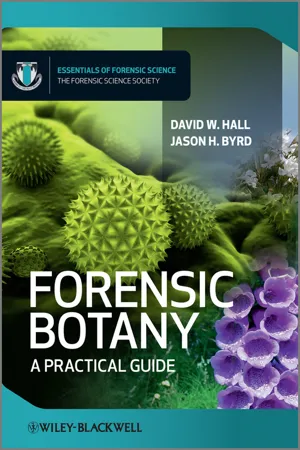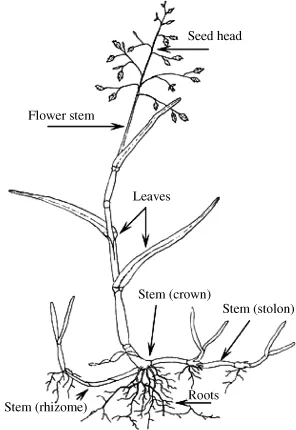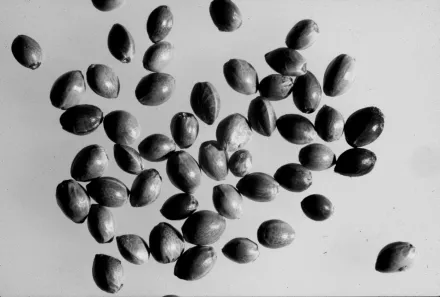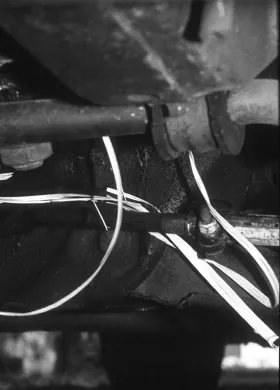![]()
Chapter 1
Introduction to Forensic Botany
David W. Hall, Ph.D.
Forensic botany is the study of plants and how they can relate to law and legal matters. Botany, while widely known as a science, has few professionally trained botanists. In proportion to the number of students trained in most other scientific disciplines, botanists are but a tiny fraction of the total number of individuals working in the field of botany. Many people who teach botany at two- and four-year colleges have perhaps taken only a course or two, and that is likely only because botanical training is typically included in a basic science curricula at the undergraduate level. Some college courses are combined zoology/botany courses, and as a result many college graduates have only portions of a full botanical course and never an entire course. Often, members of various professional plant societies (native plants, garden clubs, and nature organizations), environmental agency employees, and industry workers do not have any formal botanical education. With this low level of academic exposure it is no wonder that so few individuals understand the importance of plants, especially in criminal investigations.
Law enforcement officers and attorneys are no more informed about the science of botany, on average, than the general population. Therefore, important plant evidence is frequently overlooked. Sometimes this evidence can place a person or object at a crime scene, verify or refute an alibi, help determine time since death, the time of a crime, the place where a crime occurred, cause of death, or reason for an illness.
Botanical Evidence in Legal Investigations
To be of value, plant evidence must first be interpreted by a botanist. Typically, legal investigators should seek a botanist with well-rounded training and experience who possesses knowledge of the various specialties within the botanical field in question (Figure 1.1). Some of the various botanical specialties involve systematics (plant names), anatomy (plant cells), morphology (plant structures), ecology (relationship of organisms within the environment), and physiology, chemistry, and genetics (DNA). Not all botanists have such training. As in many fields, most professional botanists have specialized in one particular area, and have only scant knowledge concerning the forensic possibilities within others.
Plant systematics is the field that deals with the biological classification of plants. A plant systematist deals with the taxonomic classification of plants and utilizes standard nomenclature techniques to derive the scientific names of plants. Consulting with an expert in plant systematics is usually an excellent place for the legal investigator to start when trying to obtain expert assistance. Some experts work with only a single group of plants, but many, if not most, systematists work with many groups and have a good general knowledge of the entire field of botany. In order to place a name on a previously unknown plant, the existing information about that plant and its relatives must be reviewed. To have the capability to review this wide-ranging data, the plant systematist has taken courses and often conducted research and training in all of the areas of botany. They are by no means an expert in each of these fields, but the systematist usually does have connections with professionals who do have such expertise.
Legal Plant Definition
According to Webster's Unabridged Dictionary, ordinarily a plant is any living thing that cannot move voluntarily, has no sense organs, and generally makes its own food by photosynthesis. It is a vegetable organism, as distinguished from an animal organism, and there are many kinds of plants, exhibiting an extremely wide range of variation (Figure 1.2).
In the United States, the legal definition of a plant can have sentencing ramifications. For instance, by legal definition a plant must have a connected stem and root. If the stem and root are separated, each becomes a plant fragment. Of course, not all plants have roots, but most do. It is illegal to possess plants or plant fragments of marijuana (Cannabis sativa L.), a plant with psychological and euphoric qualities (Figure 1.3). The US government measures the marijuana by either weight or the number of plants. Marijuana plant samples without roots are considered to be plant fragments and are weighed with other pieces, and a plant with a root can be counted as an entire plant regardless of size. Federal guidelines recommend sentences based on either the number of entire plants or various amounts by weight. If entire plants are found along with loose fragments that have been harvested for use or sale, the number of plants can result in longer sentences than the loose fragments, even if the plants are tiny and the weight is insignificant.
Botanical Evidence in Legal Investigations
Not all legal matters are concerned with crimes against persons. Local and national ordinances can prohibit growing, selling, or importation of certain plants, such as marijuana. Identification of these plants is crucial for law enforcement. Examples of plants needing biological identification are plants listed as illegal drugs, dangerous agricultural weeds, and exotic species known to invade and destroy native habitats. A very large responsibility at all points of entrance to countries is that of illegal plant identification. All imported goods should be inspected for the many types of illegal plants and their parts. Suspected importation of harmful drugs, prohibited medicines, invasive weeds, including the seeds of prohibited plants (Figure 1.4), all need to be verified before interdiction can occur. Illegal plants are often found as fragments or as seeds or seedlings in shipments of other products such as grain or ornamental plants. Almost no-one can absolutely identify all the various plants that travel around the world with humans, and the identification of the various parts of those plants is even more difficult. Often such identifications go beyond the scope of law enforcement and border protection, and specialists are often needed.
While technically not plants, fungi have historically been studied by botanists. In many areas, naturally occurring plants, such as certain mushrooms (species of Psilocybe, the magic mushrooms), Peyote cactus (species of Lophophora), even marijuana when grown for fiber, are not illegal unless collected and prepared for use of their hallucinogenic properties. In fact, the cultivated form of marijuana used for fiber has very little hallucinogenic effect. However, unknowing individuals attempting to collect these plants often trespass on private property. Additionally, the mere transportation of plants used for their hallucinogenic effects can be illegal. While rare plants are not protected from destruction on private property, transportation of them without proper permits is a violation of international, federal, state, and local laws. The rational for the regulation of the transportation but lack of penalties for the destruction of any protected plants naturally occurring on your property stems from old English law. In essence, if it grows on your property, you own it, but transportation on public roads can be regulated.
Alibis
In many criminal events, an alibi can prove to be very useful. Fortunately, very few individuals who are not botanists can successfully lie about plant evidence. Although a particular plant can grow in a wide range of areas, linking a plant to a particular spot or area can support or refute an alibi by showing that the person is, or is not, telling the truth. Because plants grow in specific areas, an object or person can often be linked to that location by plant evidence. Plant pieces found underneath a vehicle or on clothing can be linked to the location of the crime (Figure 1.5). Plant evidence can also show where the person or vehicle had previously been. Several locations can be combined to show movement relevant to the crime, and as a result victims and suspects can easily be connected to a crime scene.
Timing
Plants can give an indication of when an event occurred. Many plants are annuals, such as warm season crops like corn and soybeans. Some annuals are quite short-lived, completing their life cycles in a matter of days or weeks, especially those in areas where the growing season is very short. These short-lived annuals may germinate as soon as the ground is warm enough and die when the weather becomes hot. Annual plants at high altitudes commonly are quite short-lived due to the very short periods of warm temperatures. Thus if a short-lived plant is present, the person or object would have been where that plant grew during its growing season.
Other characteristics also indicate seasonality and therefore can be of help. Plants that lose their leaves for the winter or in dry seasons will then regain leaves in warmer or wetter times. If a branch with no leaves attached is potential evidence, the branch could represent a time period during the winter or dry season. Leaves, flowers, and fruits that have fallen, sometimes in masses, can be of great use if the time when they fell or the amount of time it takes them to disintegrate can be determined. Thus, a single flower, fruit, or leaf may indicate something entirely different than a mass of them.
In areas of regular leaf fall the layers of leaves can indicate periods of time (Figure 1.6). Colder climates and very dry climates will normally accumulate several layers of leaves...





